This week began with afternoon temperatures soaring into the mid-80’s. It felt more like June than November.
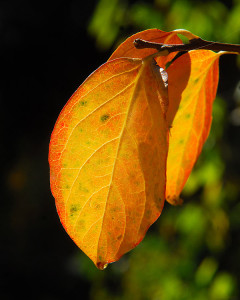
It felt like spring, but the trees at least, like this Persimmon ‘Chocolate’, knew it was fall (click any image to enlarge)
However, we knew that by week’s end the weather was forecast to change to a more cool fall-like weather pattern, so this week we decided it was time to finally, reluctantly, put the last of the summer garden to rest.
A storm rolled through yesterday, and this afternoon our daytime high is a full 30 degrees Fahrenheit colder than it was on Monday! Brrrr.
I don’t know why, but I always find the summer vegetable garden to be somewhat daunting to clean up, and I’m always a little sad to pull out the plants that have performed so well for us all season.
It was the most difficult to pull the pepper plants, not just because because they’d grown extensive roots this summer, but also because the plants still looked quite good, and the peppers didn’t seem convinced that we are thoroughly entrenched in fall.
These ‘Purple Beauty’ peppers were harvested on Thursday, and it was clear the plants were optimistic about setting more more fruit!
Our Padrón peppers dazzled us this summer with a near endless supply of peppers, however, as the season was winding down I became less diligent about picking them. We just had too many.
A number of them were left to mature, turning a vibrant red, and quite honestly I prefer them this way. They’re excellent chopped and thrown in a frittata, and a number of them found their way into the last batch of chili we made. They’re more mild than Jalapeños, but still bring a little heat, without being overwhelming. I picked all the remaining ones that looked good this week.
Having already pickled more peppers than I care to count, these will be frozen for use later this season in soups, and scrambles.
Next on the cleanup list was the cucumbers. Nothing, in my opinion, looks more pathetic, or unsightly, in a late season garden than cucumber vines that have withered, and decayed.
There were still quite a few fruits in various stages of development, but most of them were past their prime.
Still firm though, and the poultry don’t seem to mind disposing of them for us.
I had intended to plant peas earlier this fall, but due to some persistent voles we chose to hold off on planting legumes again until late winter, for a spring crop. By not planting peas now, I’m hoping for a little break in the vole cycle in the garden. When we do plant the peas though, we’re going to try using the cucumber trellis shown above to support the bush peas, which don’t tend to need much staking, but do benefit from a little extra support as they grow. I’m curious to see how that works out, as this trellis is easily portable, and doesn’t get tangled like netting, or string.
Back to our fall clean-up though…
Finally, it was time to pull the tomato plants. We did a good job staying on top of most of the ripe fruits this season, so there wasn’t a tremendous excess of fruit this week. There were of course the few obligatory green tomatoes, and this time I’m thinking of making a green tomato jam with them, maybe with an added Padrón pepper or two for a little extra added zing!
Removing tomato plants almost always seems to be the messiest part of fall clean-up in the vegetable garden. Especially the cherry tomatoes, as the fruits seem to hurl themselves half way across the yard as the plants are wrestled free from their cages.
One surprise was that ‘Blondkopfchen’, the cherry tomato variety we complained would not set fruit this season, seemed to have quite a lot of ripe fruits attached!
Eventually though, all the plants were pulled, and the greenery was carted off to the compost pile.
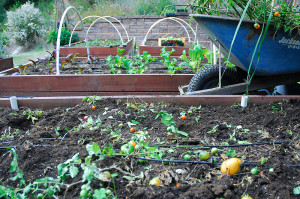
Our raised beds have 2-foot paths between them, just enough room for a wheelbarrow, which makes cleanup MUCH easier
This is a good thing, as recently our compost pile has been a little heavy on the ‘browns’, and light on the ‘greens’.
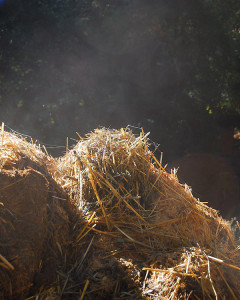
It’s true that ‘compost happens’. However, it happens much more quickly if the greens and browns in the pile are more balanced.
That said though, this morning our compost seemed to be generating plenty of heat, and steam!
Something else we’ll be adding to the compost this weekend, the remains of the heirloom squash beds.
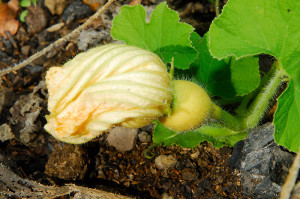
These Boston Marrow plants did not get the memo that summer is over though, and some plants are still setting fruit!
We left a few straggler squash behind after the harvest to see if they’d amount to much. It’s clear that this sea pumpkin, ‘Marina di Chioggia’, is never going to grow her trademark warts though.
I’m sure the chickens will enjoy her though, hopefully more than the last pumpkin we gave them!
With the beds in kitchen garden cleared it was time to transplant numerous flats of kale, mustard, collards, and cabbage.
We planted some kale at the end of the summer, which is doing beautifully well, and will ensure we have plenty of kale for Thanksgiving, which is less than two weeks away!
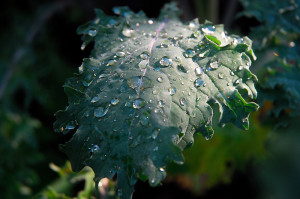
We already have a few mature kale plants from a late summer planting, including this Red Russian kale
However, providing we have a relatively mild winter, the kale seems to do very well here, and should produce all the way through to spring.
This week we’ve transplanted more of our old standbys, including ‘Lacinato’, also known as ‘Nero Di Toscana’, and ‘Red Russian’ winter kale.
‘Red Russian’ seems to do especially well here along the coast.
Joining the kale, the heirloom classic ‘Vates’ Collards have found their way into the garden this year.
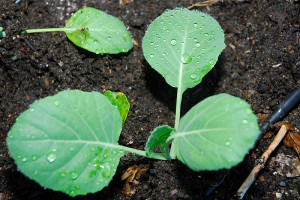
Vates Collards. I don’t use collards much, but this winter I expect we’ll be using a lot more of them!
We’ve been growing a variety of Asian greens, including a variety of Choi, Tatsoi, and Mizuna greens. This winter though we’ve decided to add a few other mustard varieties to the mix.
The open pollinated ‘Garnet Giant’ mustard will hopefully bring a splash of color to an otherwise greens-centric garden this winter.

We’re hoping that the Garnet Giant mustard will bring an unexpected splash of color to a sea of green in the winter garden
‘Southern Giant Curled’ mustard has interesting fluted edges to its leaves.
Because there can never be too much diversity in the kitchen garden, last but not least, the heirloom ‘Tendergreen’ mustard.
Not only will these mustards provide us with greens for the kitchen, but by late winter to early spring, as the mustards begin to bloom, they’ll also provide some early season nourishment for the bees.
While these transplants grow over the winter, we’ll be busy making plans for our spring garden! In the meantime though, next week we’ll take a peek at what’s going on in the native gardens, because with the recent rain, we have a lot transplanting to do!

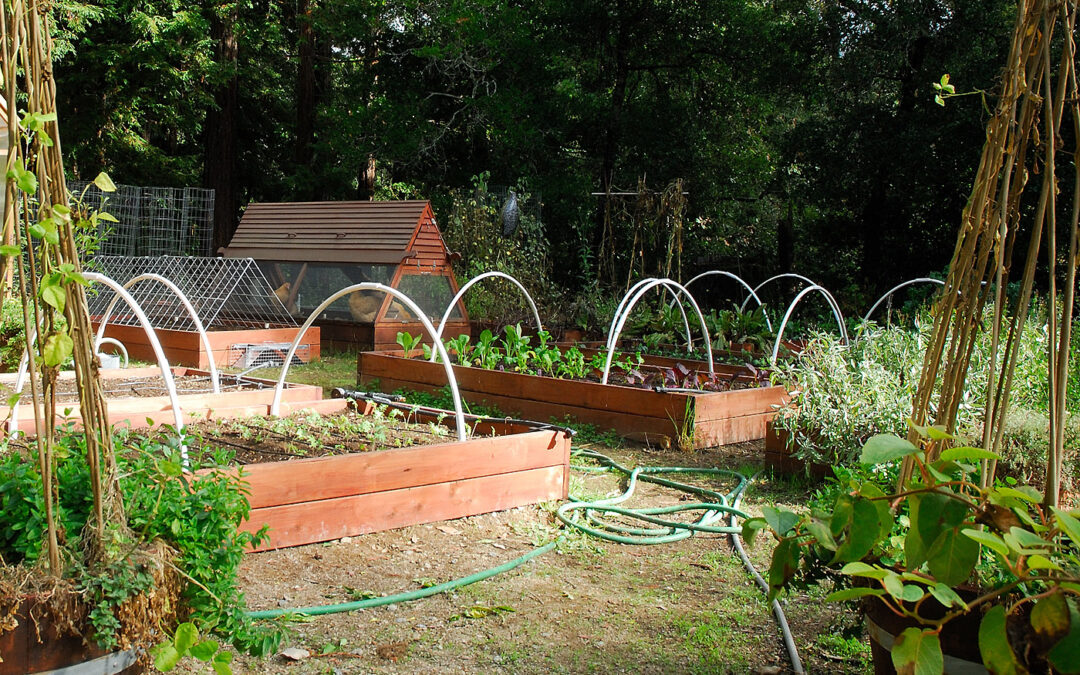

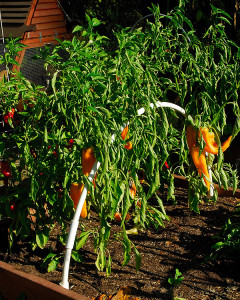
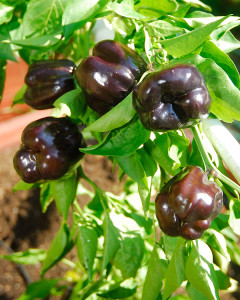
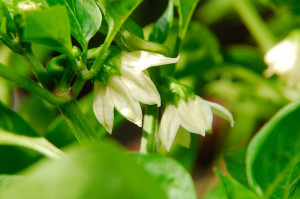

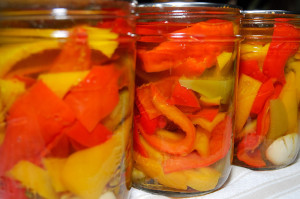

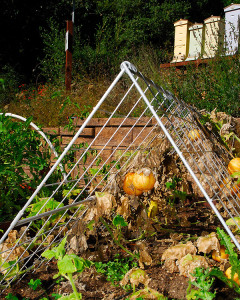
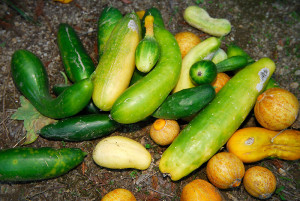
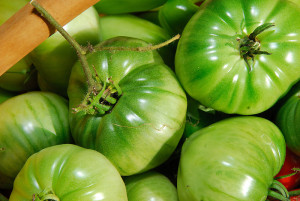
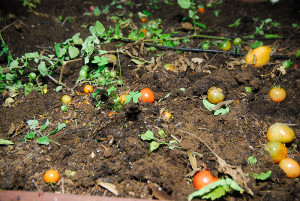
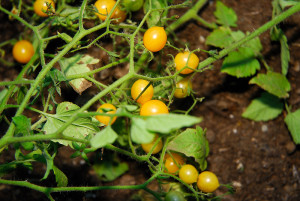


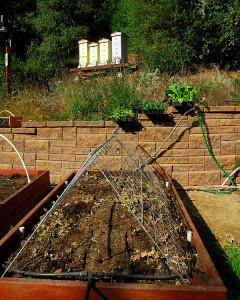
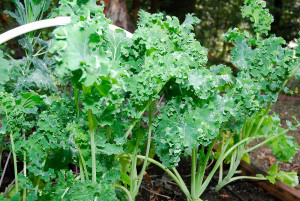

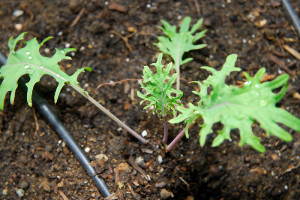
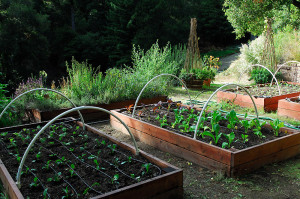
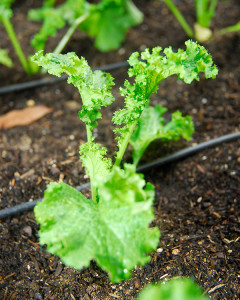
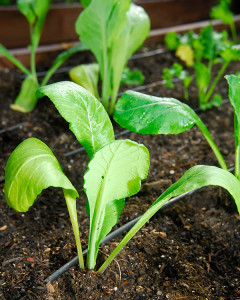








It’s been lovely catching up on Curbstone~I enjoyed seeing the fruits/veggies of your labors. I love when the Brassicas flower in spring. It’s right when the iris bloom and they look wonderful together. Looking forward to seeing your native garden. gail
I love yellow and blue flower combinations. The brassicas definitely give a warm pop of color to the late winter garden, and last year our Mason Bees seemed to love them!
I too always feel the vegetable garden has a little more oomph left to go, but pulled my pumpkins a few weeks ago. Like you said with the cucumbers, the leaves were very sad to look at. Plus the bees gave up on the flowers and that was the only reason to let the pumpkins grow in my tiny garden. You really did well with peppers this year. Usually I grow them, but not this year. I love all the shapes and colors because I don’t eat them but my husband and cockatoo do.
Our peppers did fabulously well this season, but we actually had a lot more sun this year than the last two summer seasons, where our coastal fog was more persistent than usual. I’ll definitely grow the Padrons again, and the Corno di Toro peppers. Both were amazingly prolific, and tasty too!
Clean-up sounds more daunting than the original planting! When I saw all the green tomatoes, I immediately thought of fried green tomatoes, which is what happened to the last of our unripe tomatoes, or green tomato relish, which is my favorite for all sorts of peas. I have never heard of green tomato jam, but it sounds great!
Clean up is not my favorite garden chore, although it feels great when it’s all done!
I’ve tried fried green tomatoes, and last year I made a green tomato soup…that was ok…but nothing to write home about. This year I thought the green tomato jam sounded intriguing, and might help to sweeten the fruit a little. I’ll let you know how it turns out!
Clare I mourn as I rip up my veg garden. It seems wrong to pull up a healthy producing plant but we have to. Your veg garden is amazing as always and I adore looking at those neat beds.
The challenge we have of gardening in a relatively small space is that we do have to move plants along during the season. Otherwise they’re taking up the space for the next crop. I didn’t get my carrots in this season because the summer crops just kept going, and going! It was time though, but it’s always a little sad when I realize that it will be next July before we have peppers and eggplants again 🙁
My jalapeño pepper plant keeps going and going as well. I think it knows that nobody except my husband likes them and so it keeps producing hordes of peppers out of spite. We’ve been too busy to can many of them. I wonder if it would work as a deterrent to stuff all those extra peppers down the vole holes…
I hope your chickens enjoy the squash. If not, I guess they could use them for artistic expression, right?
I think our peppers were conspiring against some of our fall crops. They didn’t want to give up being the center of attention 😉 I’m not sure if the peppers would deter the voles. Not much seems to put them off. Around here we’ve even had the deer eat the habañero peppers right off the plants!
I gave the rest of my frost damaged tomatoes to the birds today and ate what I could with dinner. I still have sweet potatoes curing. I’m sure your chickens and turkeys will love all your leftovers. 🙂
I’m jealous that you have sweet potatoes. We tried looking for organic slips here, but couldn’t find them this season. I am going to try again in the spring though, I love sweet potatoes!
I pulled the tomato plants out a few weeks ago but the peppers are still producing and I can’t get myself to pull them up yet. I have strawberries producing in November and my eggplant is almost ready to harvest!
I’m impressed that your eggplants are almost ready…in November…I hope your patience is rewarded. There were quite a few eggplant fruits still on the plants I pulled, but most were way past their prime. We had no shortage of them this summer though!
What a wonderful harvest! The Peppers are so colorful. I know what you mean about the last harvests–it’s a bittersweet time. I’m determined to put in more vegetables next summer. Fresh produce is the best!
I agree, being able to walk out to the garden to harvest dinner is far better than shopping for it! It won’t be long though, and we’ll be planning out our spring garden, and starting all over again 🙂
My Shishito peppers have gotten neither the fall message nor the no-sun-on-that-bed-anymore message. I thought I was going to lose them earlier this summer, but they are happy now!
It really is impressive how much more resilient to changes in weather and daylight the peppers are compared to tomatoes. Each year our tomatoes reach a definitive point of no return, but if we had a mild winter, I almost think the peppers would have kept going!
That looks like a big job! I like your idea of using the cucumber trellis for peas. I found that ours this year kept keeling over sideways from too much weight and snapping off unless I was really vigilant with tying them up regularly. So if they can naturally fall onto the trellis they should survive really well.
We had the same trouble with our snow peas last year. It wasn’t until spring, but once the plants were laden with pods they started to list sideways. A few almost uprooted themselves. I’m inherently lazy when it comes to stakes and string, but this trellis takes all of 60 seconds to set up, and it’s really sturdy. I think it’s short enough too, so I’m hoping it works! 🙂
I finally cleaned up the last three summer beds on Election Day. The kids were home, and they were eager to help. Three other beds were planted with fall crops in early September, and I just added the low tunnels to protect again our first frost in SC. The peas are producing beautifully, the heirloom lettuce and Swiss chard are delicious, and the cabbage, kale, and cauliflower is doing well. The bok choy seems to a lovely snack for voles, however–same with the carrots! Voles, grrrr! Our garden kitties are not earning their keep! I felt the exact same way about the peppers–they were still producing, but honestly–I needed the space for the garlic, and I’m so done with hot peppers…I’ve already preserved more than we will ever eat. Still, our tomatoes were over far too early–blight–so I have tomato envy! Good luck with your planting!
We had the same trouble. We needed to get more garlic in the ground, and the peppers were in the way!
I know what you mean about clean up. I’m going to try to overwinter the sweet peppers, perhaps under cover, perhaps just leaving them. If I were really on top of it, I’d pull them and pot them up, but I’m going to go the lazy route.
Have you heard about using dried Padrons for paprika? Sounded interesting. I’ve been taking peppers to the food bank. I am done, done, done with hot peppers. Sweet, I can’t get enough of!
I really considered, for all of a few minutes, whether to uproot some of the Corno di Toro sweet peppers and park them in the greenhouse over winter. I tend to get impatient when I get too busy though, so they were banished to the compost. I’d love to hear if yours pull through winter though. I haven’t heard of using Padrons for paprika, but now I’m intrigued!